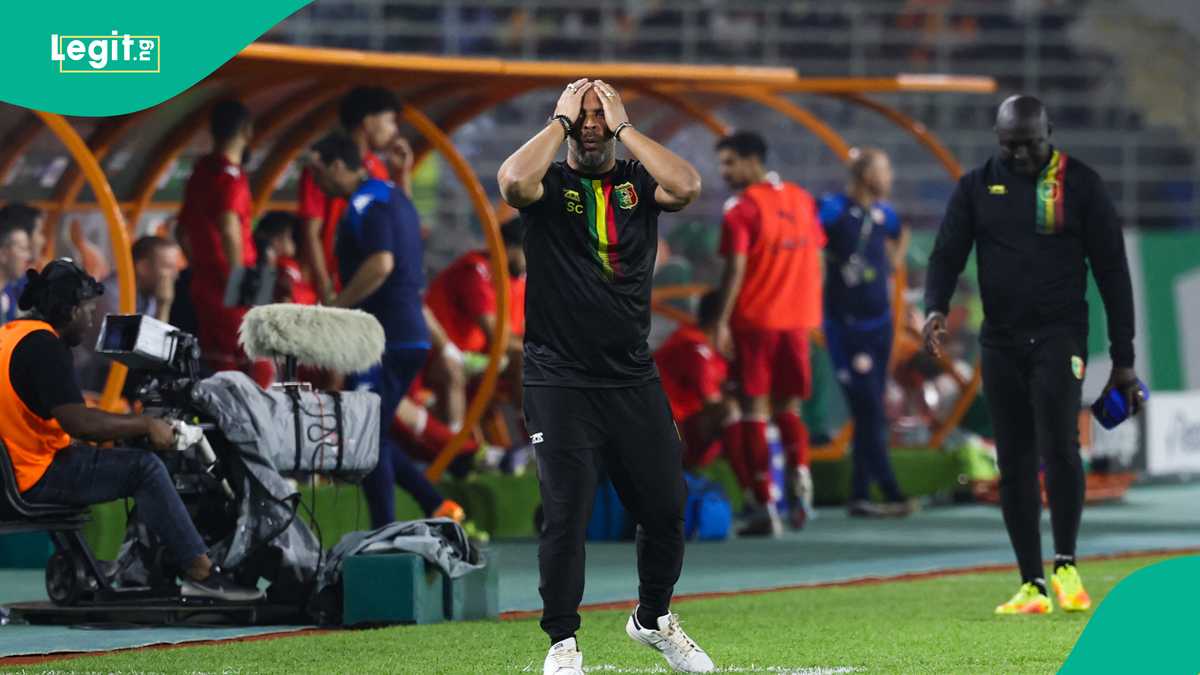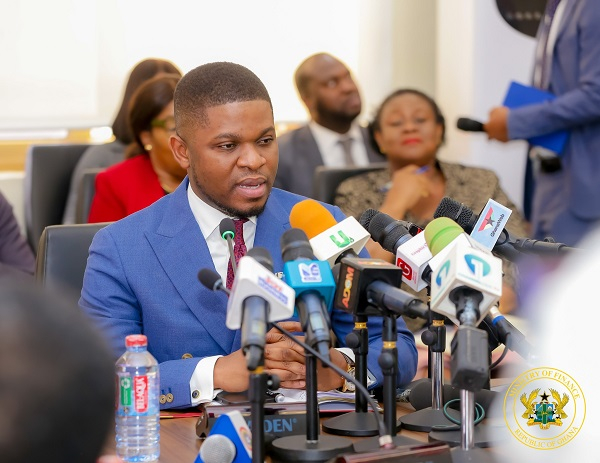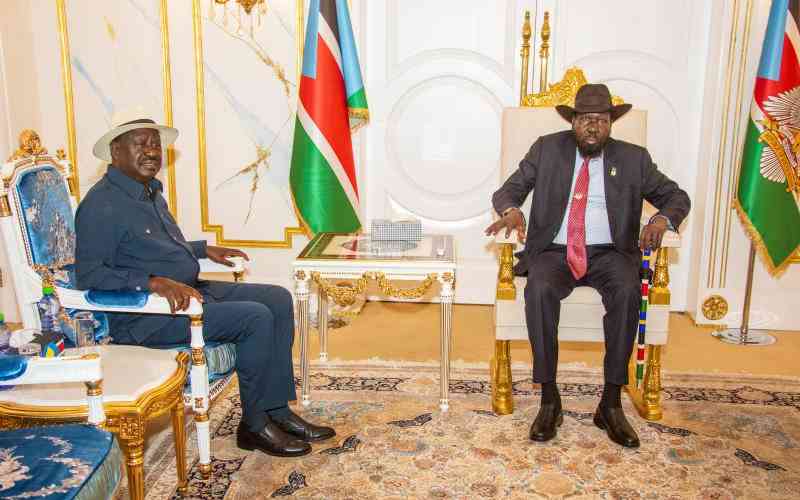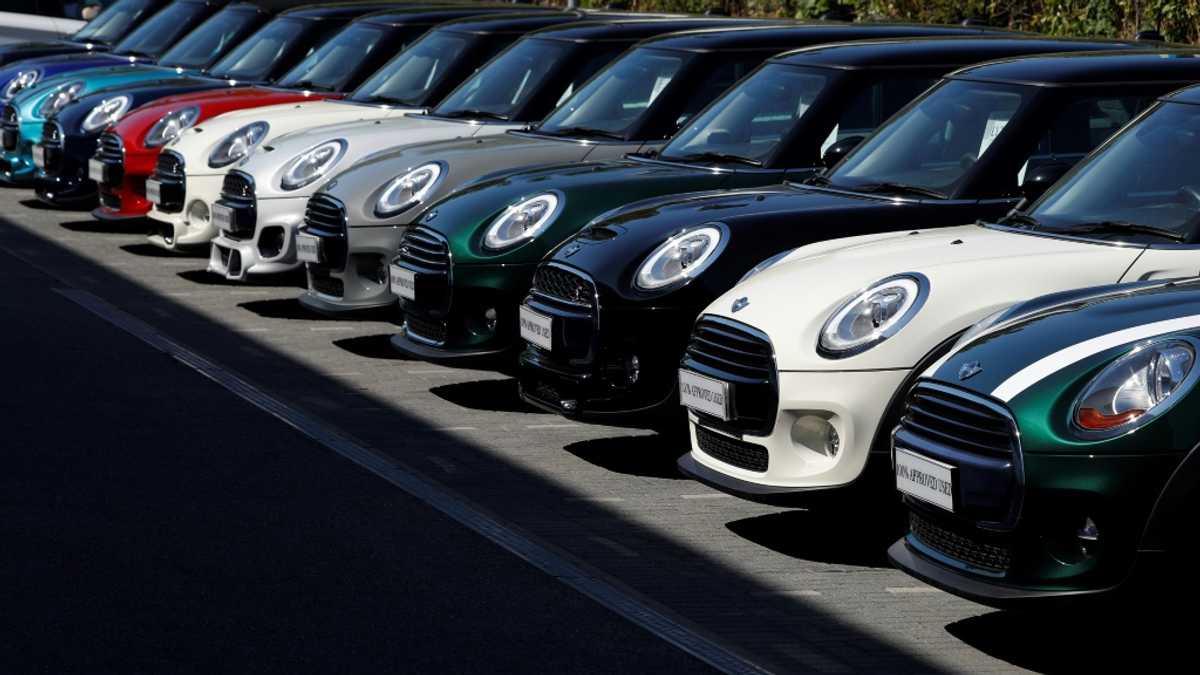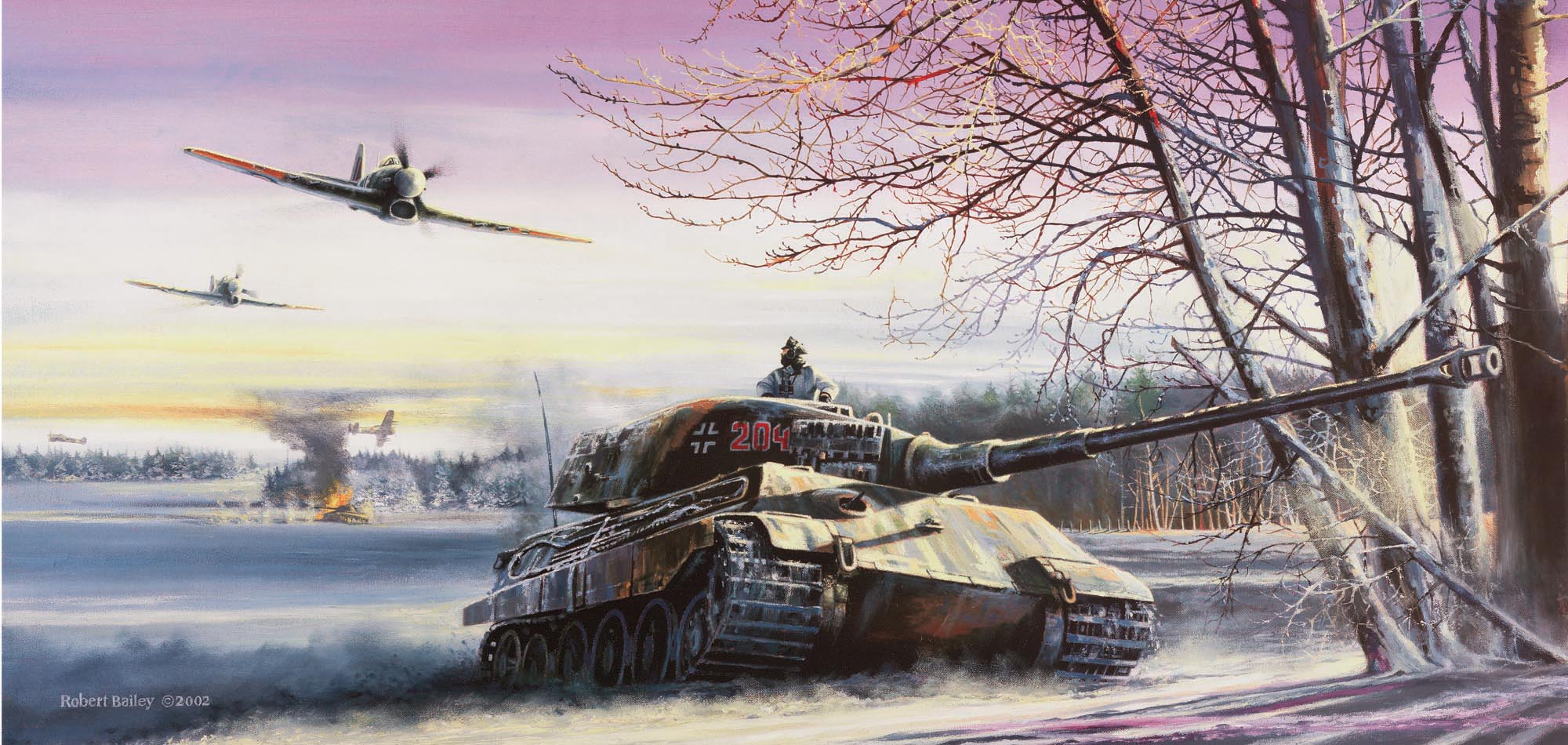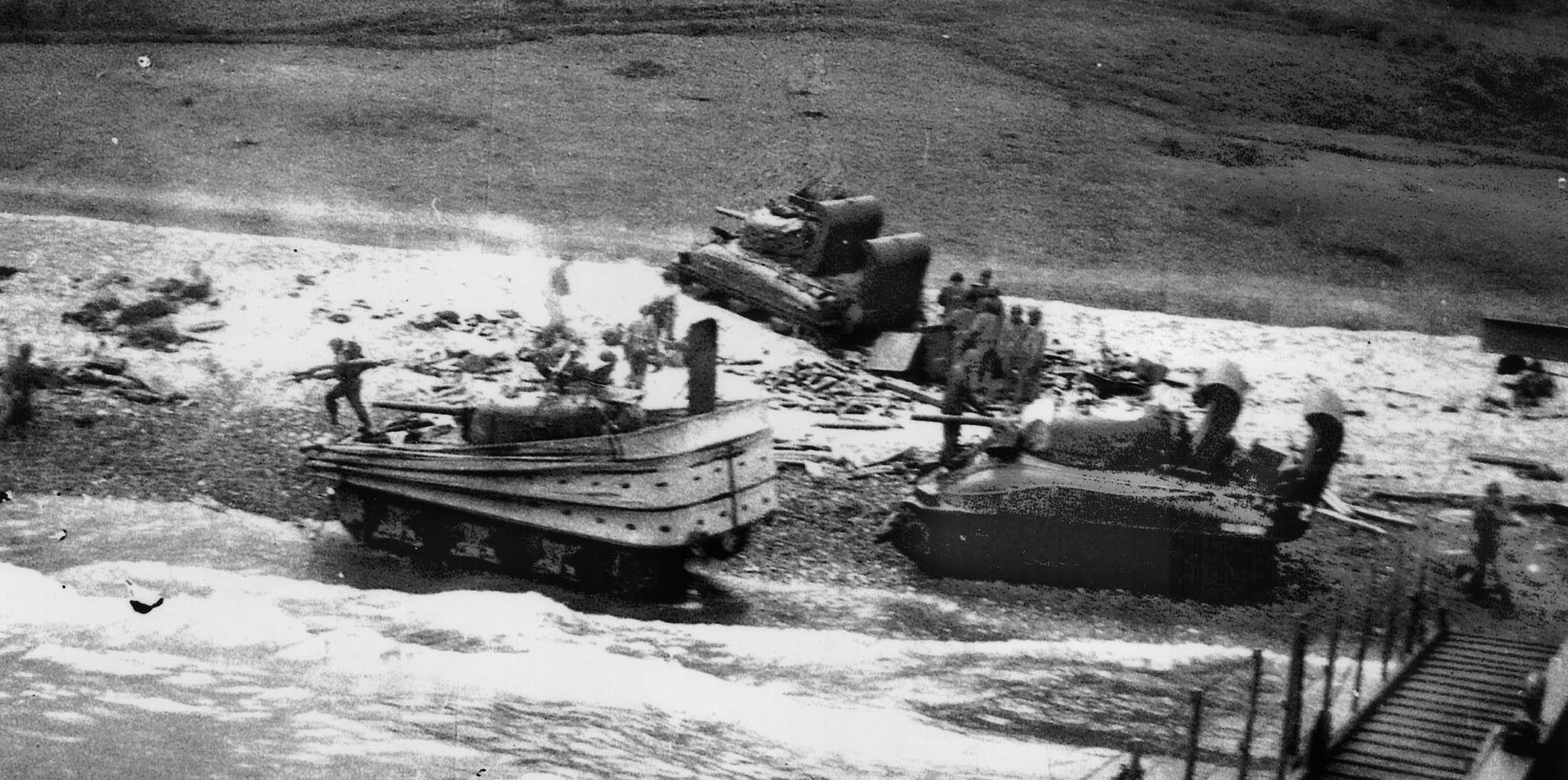Operation Torch Naval Encounter - Warfare History Network
In the predawn hours on November 8, 1942, Rear Adm. Henry K. Hewitt and Maj. Gen. George S. Patton anxiously scanned the Moroccan shore from the bridge of the heavy cruiser USS Augusta. Around them was an armada of 102 American ships poised to commence Operation Torch, the Allied invasion of North Africa.
The troopship convoy UGF1 (United States—Gibraltar, Fast) left Chesapeake Bay, Virginia, on October 23. The convoy joined en route with two surface combat groups, forming Task Force 34 under Hewitt’s overall command. The troopships carried 35,000 soldiers of Patton’s I Armored Corps, comprising the U.S. 3rd and 9th Infantry Divisions, the U.S. 2nd Armored Division, and two separate tank battalions and supporting troops. Almost the same number of sailors crewed the vessels of the task force.
The target of Hewitt’s command, designated as the Western Naval Task Force, was the port city of Casablanca on Morocco’s Atlantic coast. Two similar task forces, designated as Central and Eastern, were moving into positions in the Mediterranean Sea for landings at Oran and Algiers in Algeria.
After the fall of France, Hitler’s Germany occupied the northern part of the country and its Atlantic coast. The southern part of France and its African colonies comprised the collaborationist “Vichy France,” so named after its seat of government in the city of Vichy.
Vice Admiral Frix Michelier commanded French forces in the Casablanca sector. Michelier’s naval forces comprised the battleship Jean Bart, one light cruiser, nine destroyers, eight small surface combatant vessels, eleven minesweepers, and eleven submarines. The cruiser Primauguet and the nine destroyers formed the 2nd Light Cruiser Squadron under Rear Adm. Gervais de Lafond. Under construction at St. Nazaire, the Jean Bart barely escaped German arrival there in June 1940 and only one of its two turrets, each mounting four 8-inch guns, was operational.
Naval gunners manned the shore defenses, with a formidable battery at Point El Hank mounting four 7.6-inch and four 5.4-inch guns. Ground forces under Brig. Gen. Antoine Bèthouart consisted of four poorly equipped colonial regiments of questionable quality. Close to 170 aircraft, mainly older models, rounded out Michelier’s forces.
On October 21, a British submarine covertly delivered Eisenhower’s deputy, Maj. Gen. Mark Clark, to Algiers to contact high-ranking French officers to persuade them not to resist their recent allies. Foreign service officer Robert Murphy, President Roosevelt’s personal representative already in Algiers as a member of a trade mission, had a similar task. They had contacted several French generals, Bèthouart among them, who readily agreed to cooperate. Admiral Michelier, believed loyal to the Vichy government, was not approached.
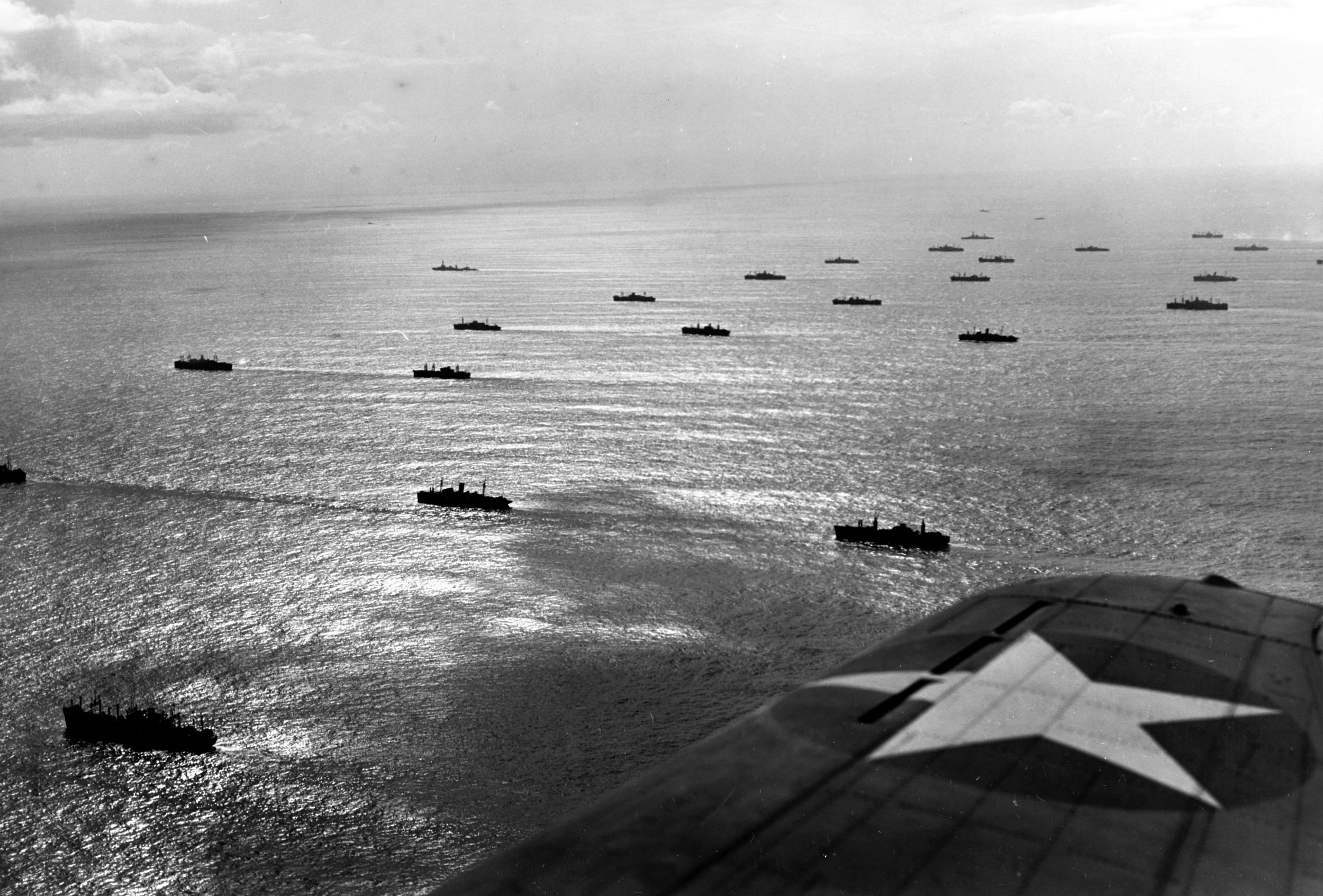
“The plan had to be based on the assumption that the French forces would resist, although it was devoutly hoped that they would not,” Hewitt would later write. “The strong fixed defenses of Casablanca, the presence of French naval forces in the port, and the absence of suitable landing beaches in the area ruled out any direct attack on that city.”
Three widely separated attack groups would conduct the capture of Casablanca. The northern group was to capture the airfield at Mehdia-Port-Lyautey, 80 miles up the coast. The main landing would be in the center at Fedala, 10 miles north of the city, and the southern group was to land at Safi, 120 miles away.
Each group of transports was protected by a covering group of combatant ships, screened on the flanks by destroyers and minesweepers from submarine attacks. The center group, the largest, was covered by the battleship USS Massachusetts, heavy cruisers USS Augusta, USS Wichita, USS Tuscaloosa, light cruisers USS Cleveland and USS Brooklyn, aircraft carrier USS Ranger, and escort carrier USS Suwannee.
The northern covering group consisted of the battleship USS Texas, escort carriers USS Sangamon and USS Chenango, light cruiser USS Savannah, and attendant destroyers and minesweepers. The battleship USS New York, light cruiser USS Philadelphia, escort carrier USS Santee, and its destroyers and minesweepers formed the southern group.
Aboard the Ranger, and the four tankers converted into escort carriers were 108 F4F Wildcat fighters, 36 SBD Dauntless dive bombers, and 28 TBF Avenger torpedo bombers. The ships also carried 76 P-40F Warhawk fighters from the U.S. Army Air Forces, which could be launched from a carrier but couldn’t land on one.
Hewitt’s ships began maneuvering into place late on October 7 in preparation to commence landings at 4 a.m. the next day. “So closely was the timetable executed that the Northern Attack Group arrived at its planned position off Mehdiya at 2400, the Southern Attack Group made Safi at 2345, and the Center Group was in Fedala Roads at 2353,”wrote naval historian Rear Adm. Samuel Morison, “For precision planning and faultless execution, this on-the-minute arrival of a large, complicated Task Force after a voyage of about 4,500 miles merits the highest praise.”
General Bèthouart received the alert 32 hours before the scheduled landings and departed Casablanca for Algiers to organize the uprising. During the night of November 7-8, Bèthouart commandeered an unwitting Colonial infantry battalion and occupied several government buildings as well as the headquarters of Gen. Charles Noguès, Commander-in-Chief of French forces in North Africa. Noguès and several high-ranking officers were detained at the headquarters. Commander-in-Chief of Vichy forces Adm. François Darlan, who was visiting his sick son in Algiers from France, was also arrested. While Bèthouart occupied the telephone exchange, Noguès headquarters had a separate telephone system, and he remained in contact with subordinate commands.
While detained at his headquarters, Noguès received word about Allied landings at Oran and Algiers around 3 a.m. on November 8 and passed the alert and orders to resist the invasion. By noon, Bèthouart was arrested, his abortive uprising put down, and Noguès and Darlan freed.
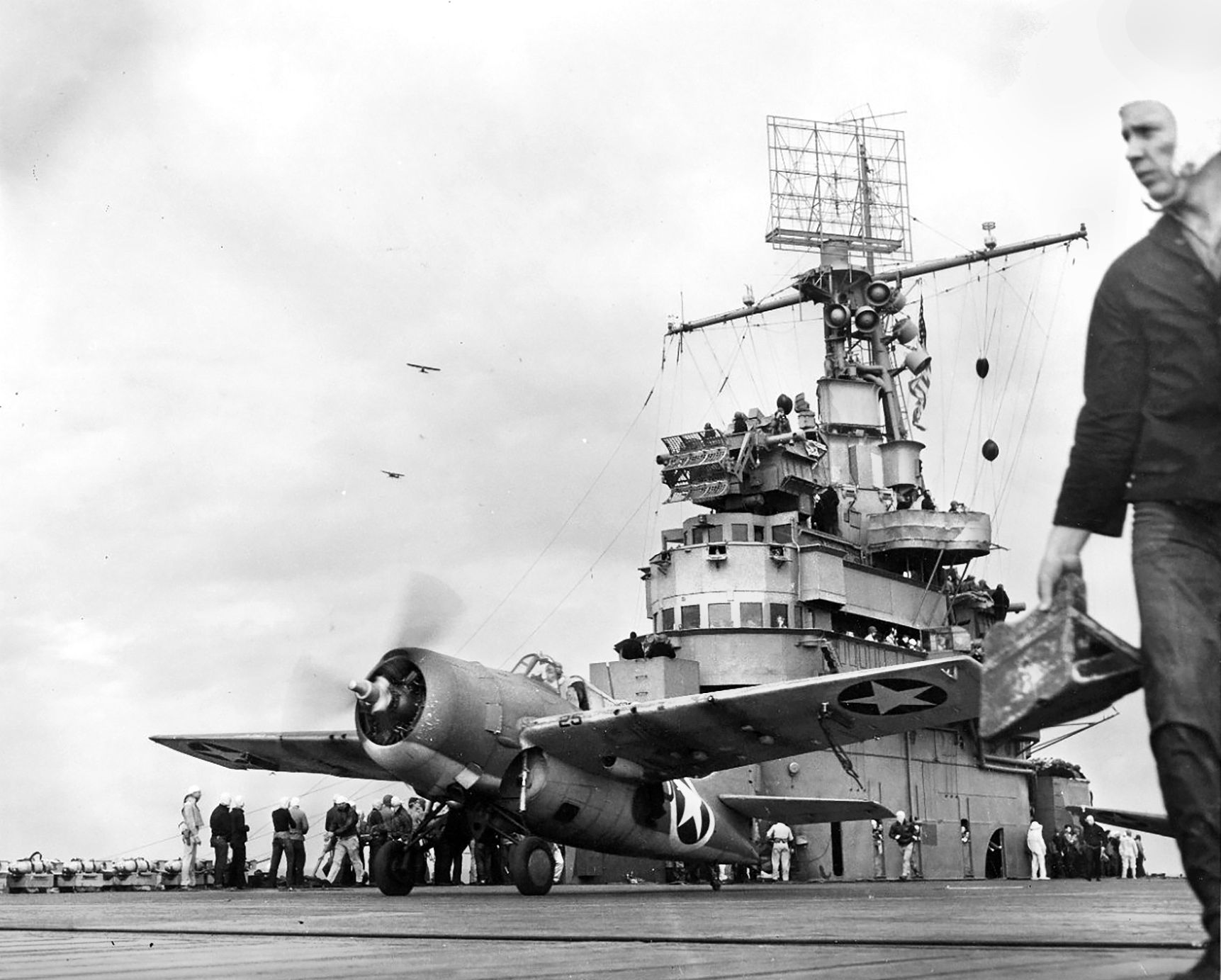
At 0:30 a.m. on November 8, Patton’s soldiers began loading into landing craft from troopships positioned eight miles offshore. With the first light expected at 5:30 a.m. and sunrise at 7 a.m., the time to move to the shore was set for 3:30 a.m. However, operations in total darkness in heavy swells pushed the jump-off time back almost an hour. Once loaded, the landing craft and tank lighters moved to the line of departure 4,000 yards from the shore, from where it was supposed to take 15-20 minutes to land.
The landings were to commence without preparatory naval and air bombardment because Eisenhower wanted to avoid a confrontation between the erstwhile allies. The signal from the French that there would be no resistance was the French searchlight elevated to the vertical. All ships and aircraft received orders not to fire unless fired upon or in the face of imminent hostile action. American commanders worked out a signal system using American baseball terminology, “Batter Up” meant “I am being fired upon,” and “Play Ball” was an order to open fire.
With no indications of French intentions by 4:30 a.m., Hewitt ordered the first wave of Higgins boats (Landing Craft, Vehicle, Personnel—LCVP) and tank lighters escorted by destroyers to proceed to their designated landing zones. Minesweepers began laying anti-submarine minefields north of Port Lyautey and south of Safi, while destroyers screened the outer perimeter of the task force against submarine attacks.
Converted destroyer-transports USS Bernadou and USS Cole, carrying K and L Companies, 47th Infantry Regiment, raced ahead of the first wave at Safi. They were fired upon by shore defenses as they entered the harbor, and signaled “Batter Up!” reports which were relayed to Rear Adm. Lyal Davidson, commander of the Southern Attack Group. Without waiting for acknowledgement, one of the escort destroyers, USS Mervine, and machine gunners on the landing craft returned fire. When the “Play Ball!” command was given, the battleship New York and cruiser Philadelphia began pounding the shore batteries.
Infantrymen from K and L Companies went ashore at 4:45 a.m. and quickly captured port facilities. Opposition from the French garrison, numbering less than 1,000 men, was minimal. There were few casualties among the U.S. Army troops, although a significant number of landing craft, primarily made of wood, were damaged or destroyed on the rocky shore. Destroyer Mervine suffered minor damage to its steering gear from a near miss by a shore battery. By 3:30 p.m., all of Safi was in American hands.
Almost immediately, “Batter Up” reports began coming in as French anti-aircraft guns opened fire on American aircraft in the north around Port Lyautey-Rabat area. At the command of “Play Ball,” American fighters engaged their French counterparts coming up to meet them, as American dive bombers attacked French aircraft still on the ground. Supported by naval gunfire and aircraft, troops from the Northern Attack Group began coming ashore. As at Safi, opposition was light, and by 11 a.m., the Port Lyautey area was secured, and the Army P-40F Warhawk fighters began landing at the captured airfields.
As the landings at Port Lyautey commenced, a French armed sloop Victoria, escorting two steamers, blundered into the northern screening force. Ignoring the warning shots from the minesweeper USS Hogan, Victoria opened fire. The return fire from Hogan killed its gunnery officer and forced the French ships to beach.
At the site of main American landings at Fedala, the French shore batteries, the most powerful of which mounted four 5.4-inch guns with a range of up to 11 miles, opened fire in the dawning light. Cruisers Wichita and Tuscaloosa, hovering at the extreme range of French guns, returned fire after receiving permission to “Play Ball!”
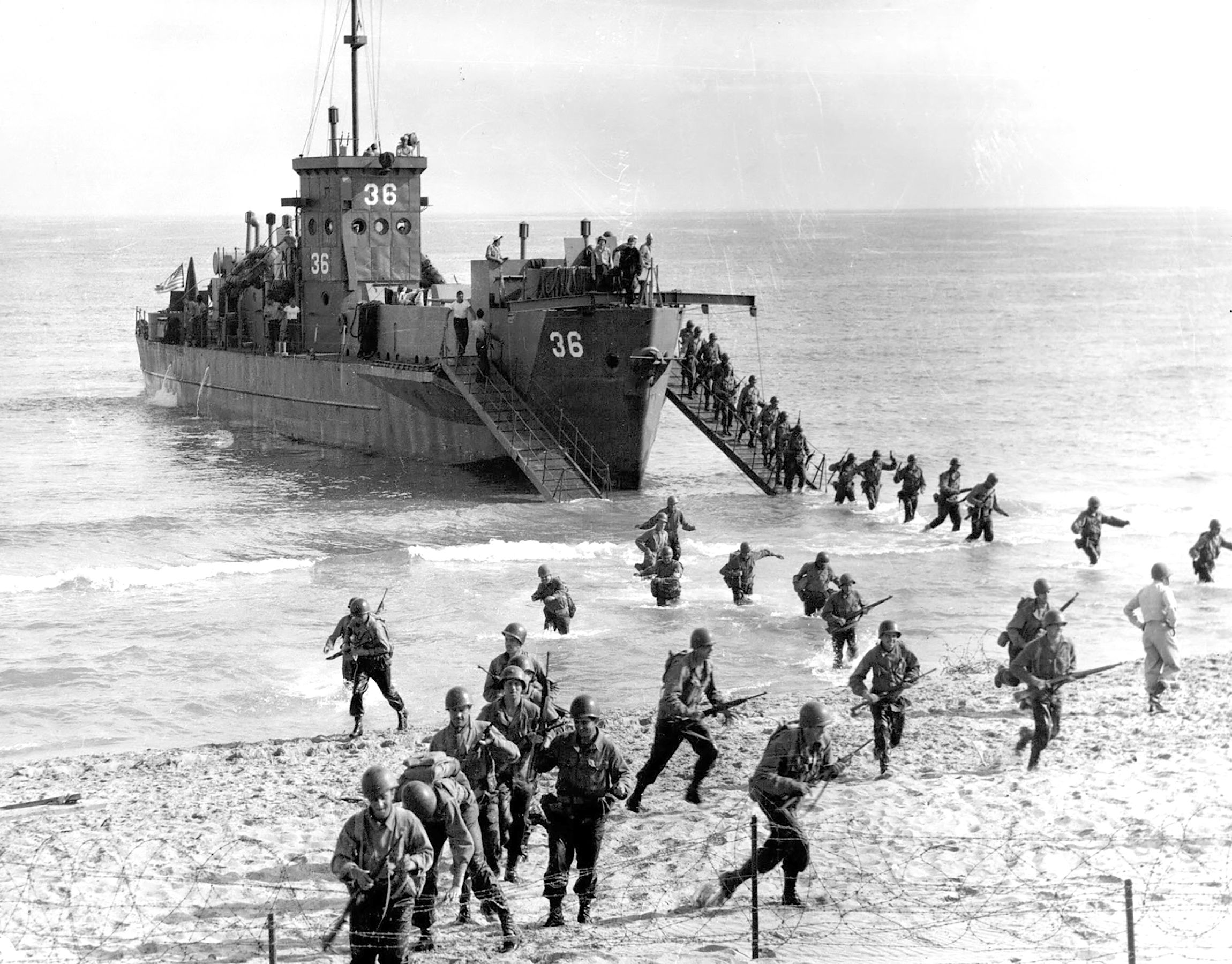
The landing beaches at Fedala, 12 nautical miles from Casablanca harbor, were well within the range of El Hank battery and Jean Bart’s guns, which joined the fray. They, in turn, were engaged by cruisers Augusta and Brooklyn and destroyers Wilkes, Swanson, Ludlow, and Murphy. Fighters from Ranger and Suwannee quickly established air superiority as American bombers attacked French shore batteries and ships in the harbor.
The Massachusetts scored multiple hits on Jean Bart, but most of its shells, as discovered later, failed to detonate due to faulty fuses. One round, however, hit Jean Bart’s only operational turret and jammed its drive train, rendering the turret inoperable. Three French submarines and three passenger ships, fortunately with no passengers aboard, were sunk at their piers.
French return fire, although spirited, was largely ineffective. A hit on the destroyer USS Murphy opposite Fedala killed three sailors and damaged an engine, and the minesweeper USS Palmer suffered minor damage from two hits.
Around 8 a.m., six French destroyers sortied from Casablanca harbor and headed for Fedala to attack troopships. They managed to damage several landing craft before being intercepted by U.S. destroyers Wilkes and Ludlow. French destroyer Miland dueled with Wilkes, scoring hits on each other before the arrival of cruisers Augusta and Brooklyn forced the French vessels back.
Shortly after 10 a.m., the light cruiser Primauguet and several submarines on the French side and Massachusetts and Tuscaloosa joined the action. French destroyers Fougueux and Boulannais succumbed to multiple hits and went down. Augusta took a hit from El Hank battery, but the damage was minor. Despite multiple French torpedoes in the water, none of the American ships were hit. Deftly maneuvering American ships avoided the worst of French fire, although there were a few close calls. “I was on the main deck when a shell hit so close it splashed water all over me, and later, on the bridge, one hit even closer; I was too high to get wet,” Patton remembered, “It was hazy, and the enemy used smoke well. I could just see them and make out our splashes with our ships firing like hell and going in big zigzags and curves to keep the enemy from our subs.”
By noon, outgunned and strafed by aircraft, French vessels were getting the worst of it. The cruiser Primauguet and destroyers Milan, Frondeur, and Brestois were heavily damaged, disengaged, and retreated to port. Destroyer Albatros, its engines damaged, was left behind. Of the seven French vessels engaged, only L’Alcyon returned to port undamaged.
Very few American landing craft were damaged or destroyed by French fire or strafing by aircraft. However, heavy waves capsized some boats while others dashed apart on rocky beaches. Over a hundred landing craft were damaged or destroyed on November 8. Such high loss of landing assets severely delayed American ground forces coming ashore. Nevertheless, sufficient troops landed to overcome Fedala’s garrison of 2,000, and by noon, the town was in American hands.
Around 12:45, the French armed dispatch vessel La Grandière, two minesweepers, and a tug left Casablanca harbor to rescue survivors at Fedala. However, their foray was viewed as hostile and fired upon. The tug took Albatros in tow but, attacked by American fighters, beached the wounded vessel. Primauguet and Milan barely limped to port and settled on the shallow bottom. In the late evening, destroyers Brestois and Frondeur were finished off by aircraft from Ranger and sunk in the harbor. The 2nd Light Cruiser Squadron was effectively out of action, with only destroyers Tempête and Simoun, which did not engage in the morning, remaining operational in addition to L’Alcyon.
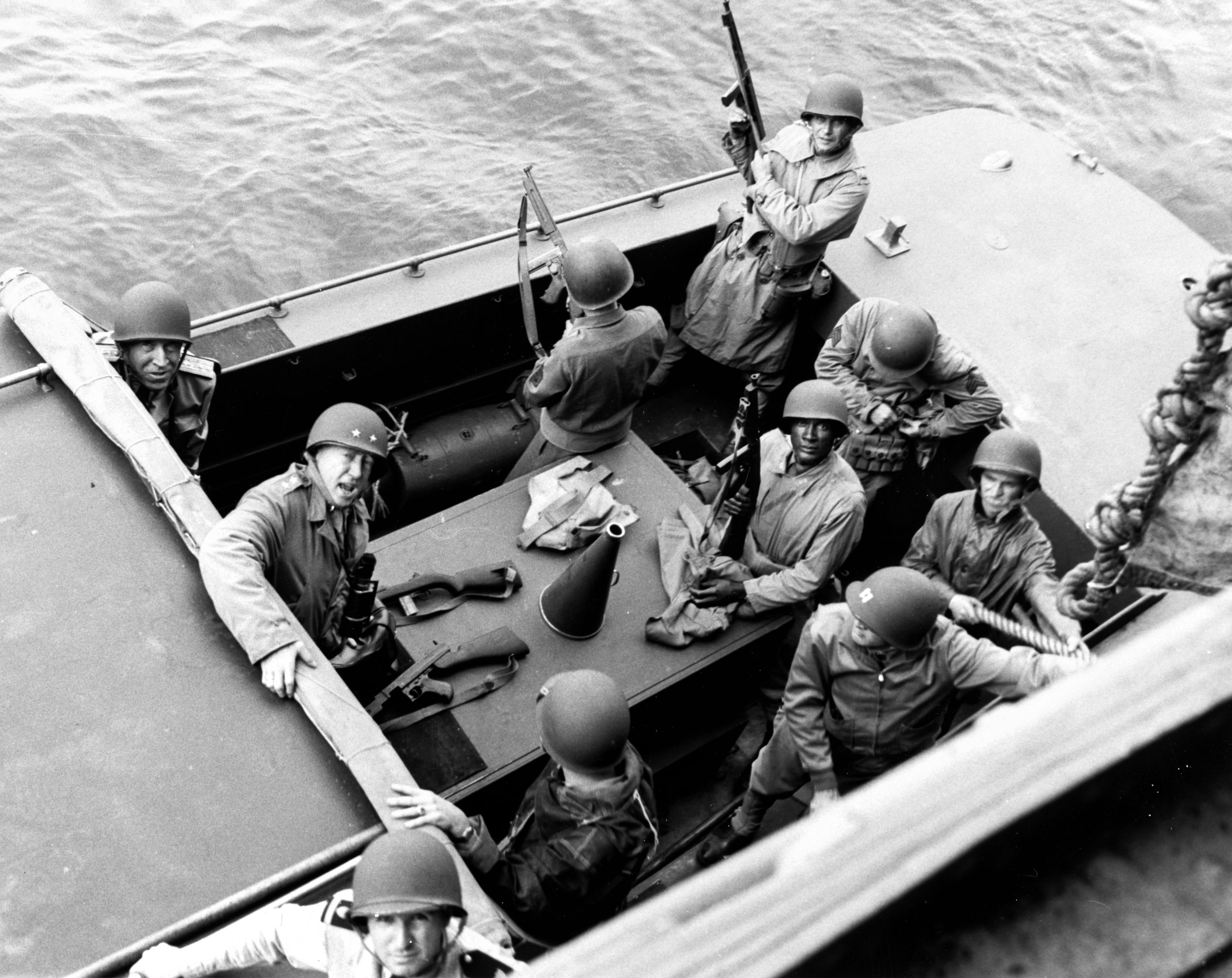
Despite the valiant efforts by the French, the action on November 8 was overwhelmingly one-sided. Of the four American ships hit by French shells, none suffered serious damage, and only three sailors were killed on Murphy. Six American aircraft were lost at the cost of more than 20 French planes shot down and a roughly equal number destroyed on the ground. Three French submarines were sunk in the harbor, and eight sortied to meet the Americans. They launched 20 torpedoes at American vessels with no hits. Of the eight French subs, three were sunk by depth charges, one damaged and beached, one escaped to Cadiz, Spain, and two to French-held Dakar in Senegal. Only one, Orphée, made it back to Casablanca undamaged.
American vessels, other than providing gunfire and air support, were not engaged with their French counterparts on November 9. The action primarily took place on land and in the air as American ground forces closed in on Casablanca from north and south. On November 9 and 10, Hewett and Pattons sent Michelier armistice offers, which he rejected.
On November 10, two French corvettes sortied from Casablanca harbor to fire on American troops advancing along the shore from Fedala. As Augusta and four American destroyers drove off the French ships, the turret on Jean Bart came alive. The French had repaired the damages to its turret on November 9, but left the guns in their prior position so that it appeared to be still out of action.
“Suddenly, two huge orange splashes rose, so close alongside the bridge of the Augusta that I and others on the flag bridge were doused with the spray,” wrote Hewitt. “We promptly rang up full speed, put the rudder full right, made smoke and zigzagged away, but not before we had been near-missed several times more by the Jean Bart’s two-gun salvos.”
Around 3 p.m., American SBD Dauntless dive bombers scored two hits with 1,000-pound bombs on Jean Bart. The French battleship took on water and settled to the bottom of the harbor with its guns elevated to an angle where they could not fire on American vessels.
By the end of November 10, American forces surrounded Casablanca. Everything was ready for the final assault the following day. At 5:30 a.m. on November 11, Patton sent a captured French officer to Michelier with emphatic demands to surrender immediately or be destroyed.
Unbeknown to Michelier, Darlan was captured by Americans on November 10. In a deal with Eisenhower, in exchange for being recognized as a French High Commissioner and commander of French forces in Africa, Darlan signed an armistice and ordered the French forces to surrender and cooperate with the Allies. Patton’s demands coincided with orders relayed to Michelier by Darlan, who was seconded by General Noguès, also captured by Americans, and brought to Casablanca. By 7 a.m., Michelier ordered his forces to lay down their arms, and Casablanca was fully occupied by 11 a.m.
“At 2 o’clock, Admiral Michelier and General Nogues came to treat for terms,” Patton wrote, “I opened the conference by congratulating the French on their gallantry and closed with champagne and toasts. I also gave them a guard of honor—no use in kicking a man when he’s down.”
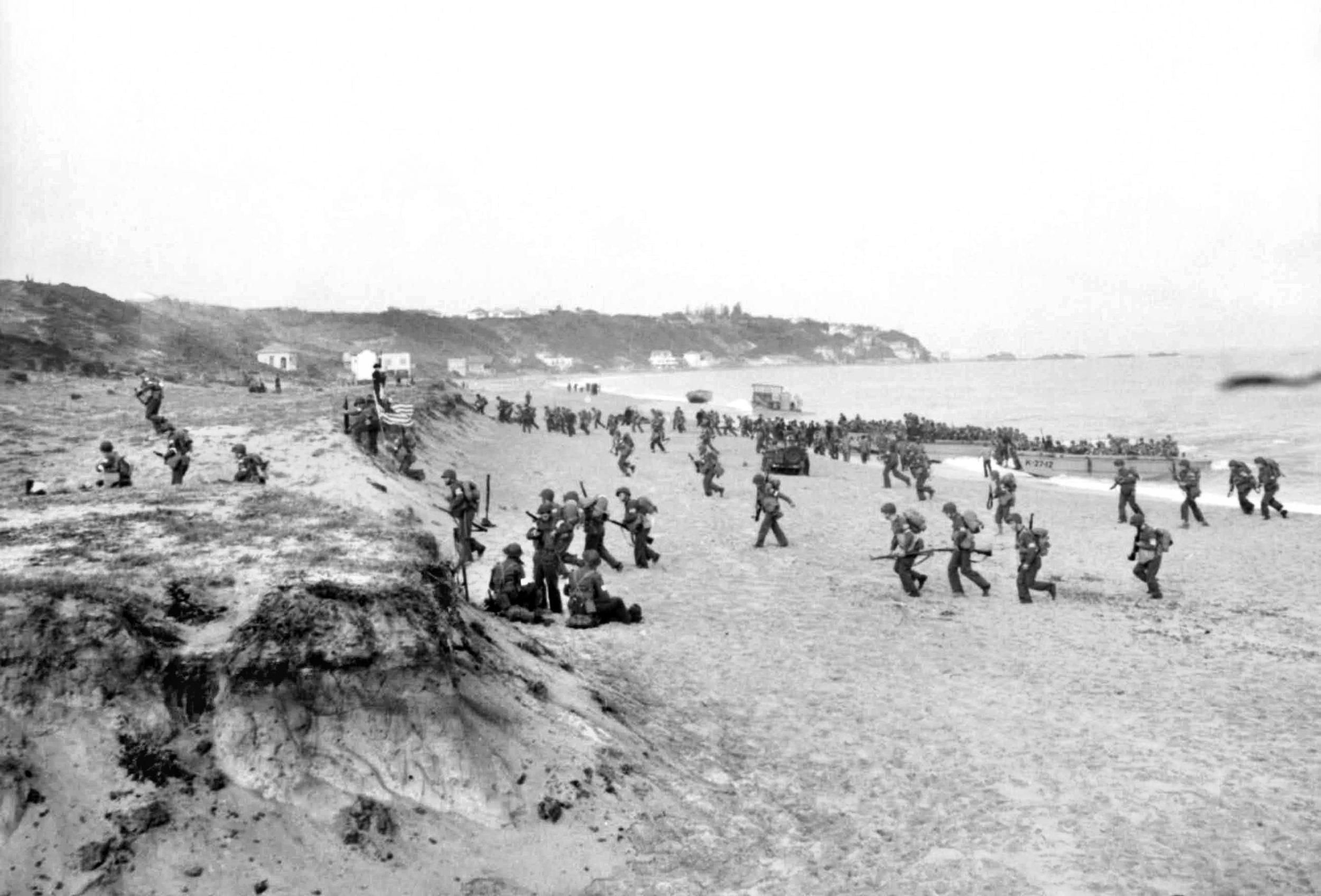
On the evening of November 11, two German submarines arrived at Casablanca. Shortly before 8 p.m., the U-173 under Oberleutnant zur See Hans-Adolf Schweichel, hugging the shallow waters off the coast, snuck in between the minefield and the shore and fired five torpedoes, all of which hit the transport USS Joseph Hewes, tanker USS Winooski and destroyer USS Hambleton. Most of the troops from Joseph Hewes had already come ashore, but approximately 100 men died, including its captain, Robert Smith.
The Winooski and Hambleton remained afloat. A torpedo hit Winooski on an empty fuel compartment, and the ship continued operations. The Hambleton suffered serious damage to its engine room and 20 men were killed. She was towed to Casablanca harbor and eventually returned to the United States. The second submarine, U-130 under Kapitän zur See Ernst Kals, did not score any hits, and the two vessels slipped away despite frantic efforts to find them.
On November 12, as American aircraft and light vessels hunted the two German submarines, U-130 snuck in again, firing five torpedoes for five hits. Transports USS Edward Rutledge, Tasker H. Bliss, and Hugh L. Scott went down with the loss of almost 80 men. The U-130 slipped away unscathed again.
In their hunt for the German U-boats, American aircraft mistook the French submarine Sidi Ferruch, which did not take part in earlier fighting, and sank her off the coast of Fedala.
On November 15, the U-173 scored a torpedo hit on the cargo ship USS Electra, but the ship remained afloat for two days before being beached at Casablanca. She eventually returned to the United States. In turn, the U-173 was run down by destroyers Woolsey, Swanson, and Quick and sunk by depth charges on November 16.
The U-130 left the area to continue haunting Allied shipping under a different captain, Oberleutnant zur See Siefried Keller. By the time American destroyer USS Champlin sank her with depth charges off the Azores on March 12, 1943, the U-130 sent 24 Allied ships to the bottom of the sea.
Except for the loss of life inflicted by the two German U-boats, American casualties during the battle of Casablanca came to approximately 170 killed and 400 wounded. French casualties came to over 400 killed and 200 wounded.
Being treated with respect and courtesy by Hewett and Patton, Michelier and Darlan offered full cooperation to the Americans. Released French prisoners were allowed to keep their arms, and French flags continued flying over administration buildings. Local authorities worked hand-in-hand with the Americans in swiftly repairing damages to harbor facilities, ensuring speedy disembarkation of American troops, equipment, and supplies.
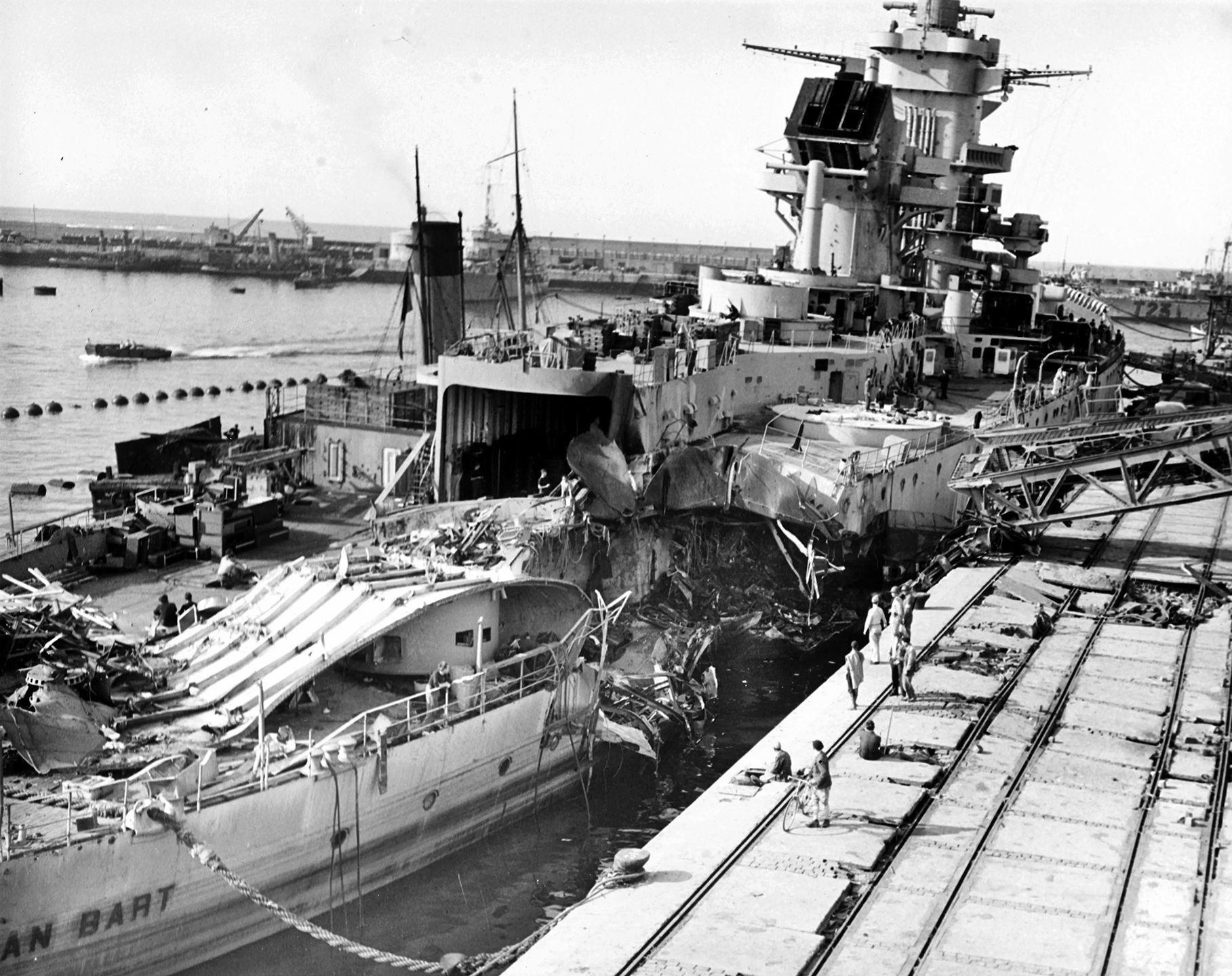
Of the French ships damaged during the battle, some, like destroyer Albatros, were fully repaired and served with the Free French. The cruiser Primauguet, damaged beyond repair, was sold for scrap after the war. The battleship Jean Bart was refloated, but it was still incomplete and did not enter active service.
Its mission completed, the Western Naval Task Force left Casablanca. The troopships and their escorts returned to the United States, while the combatant ships were assigned other missions. The UGF2 convoy, which arrived off Casablanca on November 13, began disembarking the next wave of troops and supplies. For his successful operation completion, Hewett received his third star as a Vice Admiral.
Admiral Darlan was assassinated by a monarchist member of French Resistance Fernand Bonnier de la Chapelle in December 1942. Admiral Michelier was placed on leave after Darlan’s death. After his disagreements with Admiral Phillippe Auboyneau, commander of the Free French Navy, Michelier was forcibly retired in December 1943.
Hitler was enraged with the French going onto the Allied side in Africa. As a result, German troops occupied most of the Vichy France territory. On November 17, Hitler ordered the launch of Operation Lila, aimed at capturing the French fleet in Toulon. In defiance, the French admirals ordered the scuttling of the fleet. More than 70 ships, including three battleships and seven cruisers, were damaged and sunk by their crews.
Now a major hub of Allied operations in Northwest Africa, Casablanca hosted a conference in January 1943 between Roosevelt and Prime Minister Winston Churchill. Soviet leader Joseph Stalin was invited but did not attend, citing ongoing fighting on the Eastern Front. Generals Charles de Gaulle and Henri Giroud, representing the Free French Forces, attended as observers.
Between them, Roosevelt and Churchill worked out multiple steps regarding further conduct of the war, the most important being the decision to invade Sicily in 1943 and the doctrine of Axis powers’ unconditional surrender.
While the successful Operation Torch resulted in the opening of the second front against German and Italian forces in northwestern Africa and a staging point for eventual invasion of Southern Europe, there was much hard fighting ahead.
Victor Kamenir is the author of The Bloody Triangle: The Defeat of Soviet Armor in the Ukraine and a frequent contributor to WWII History and Military Heritage magazines.


